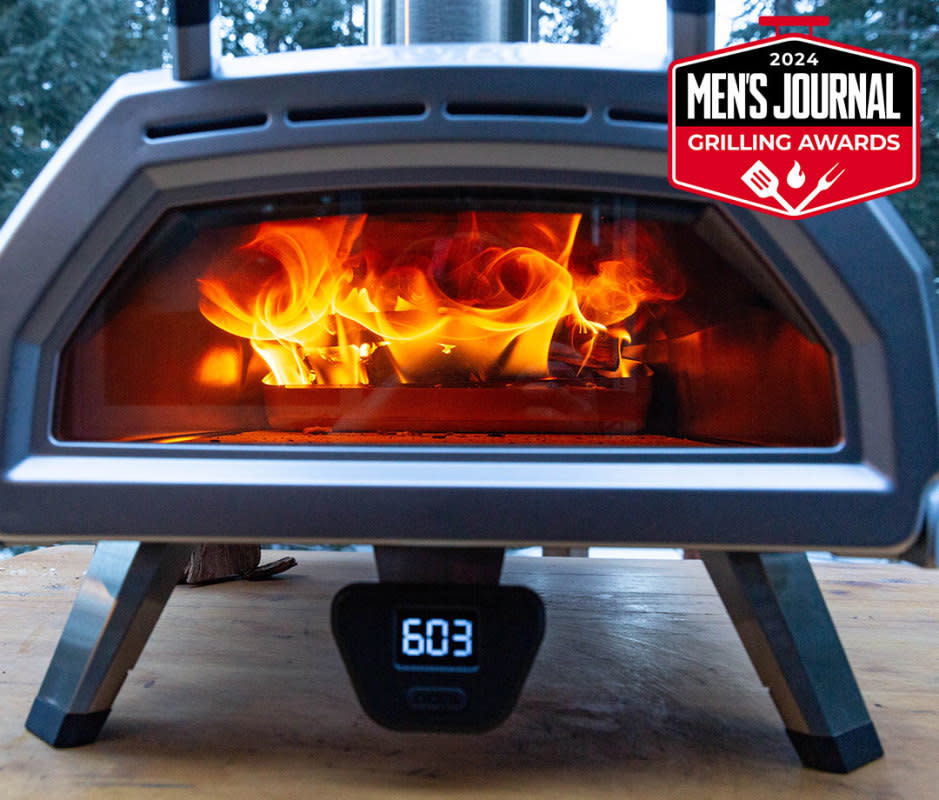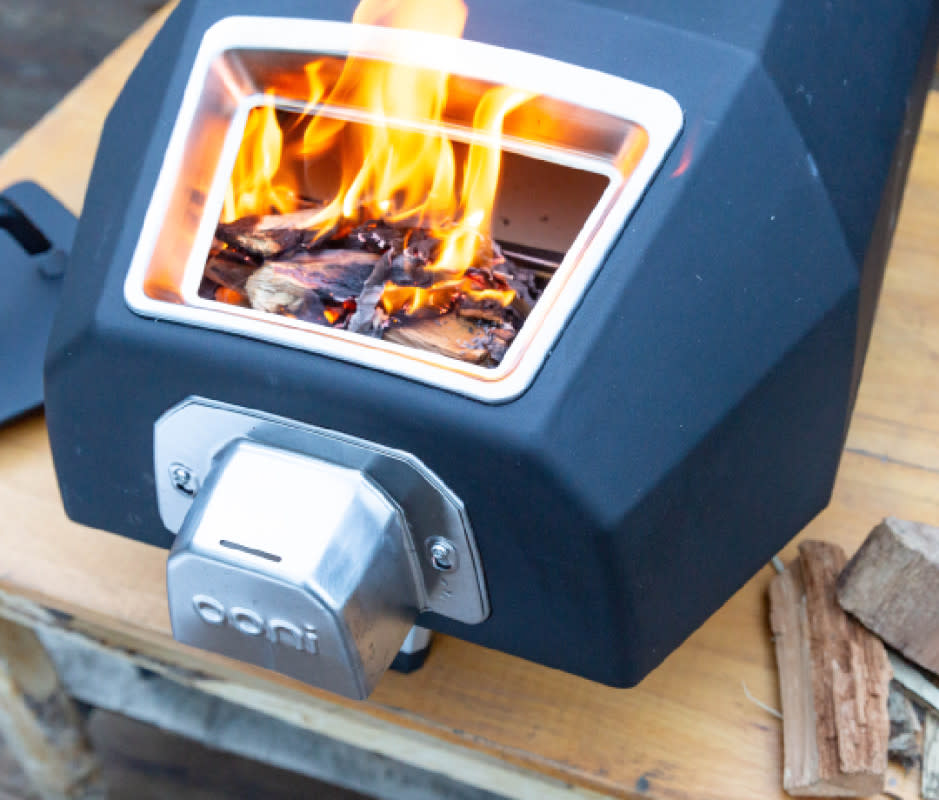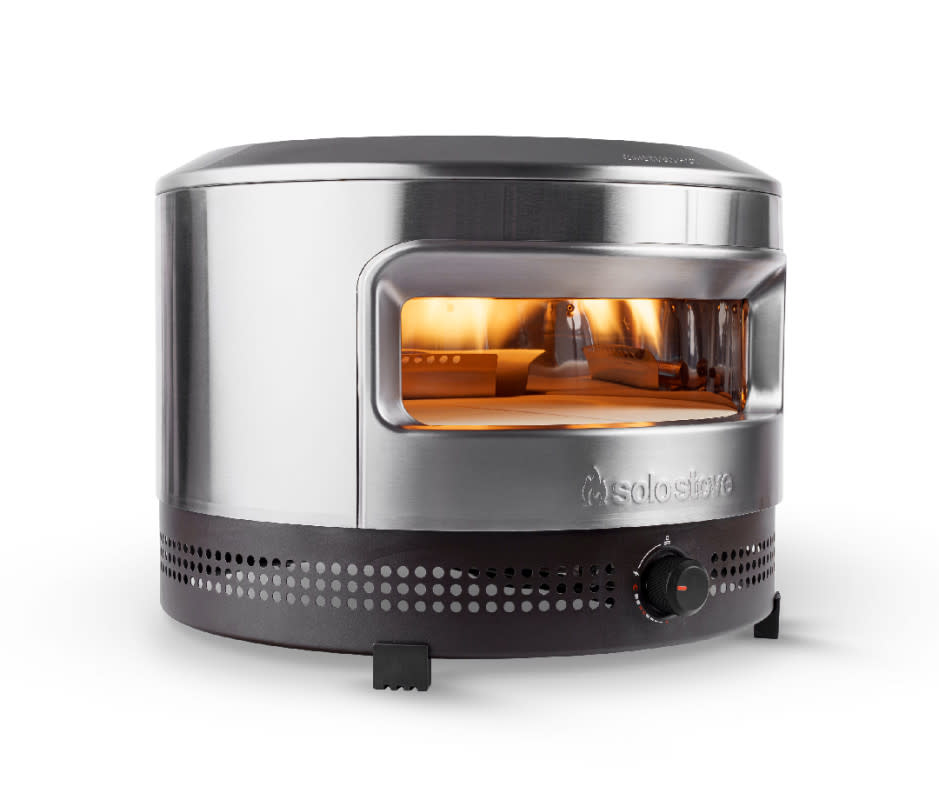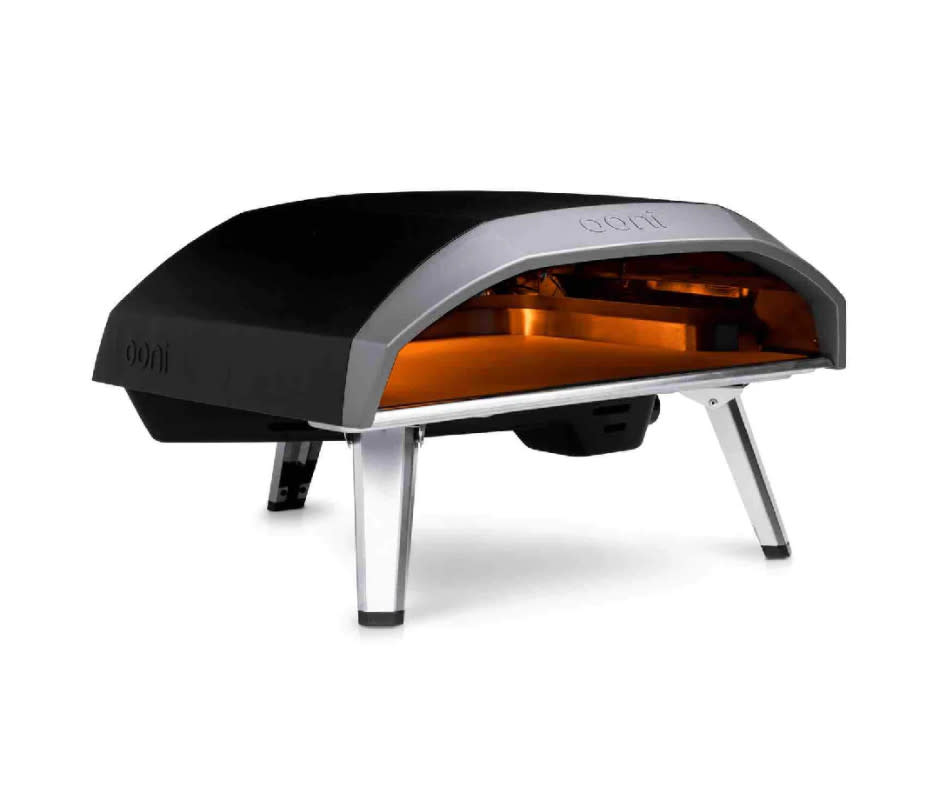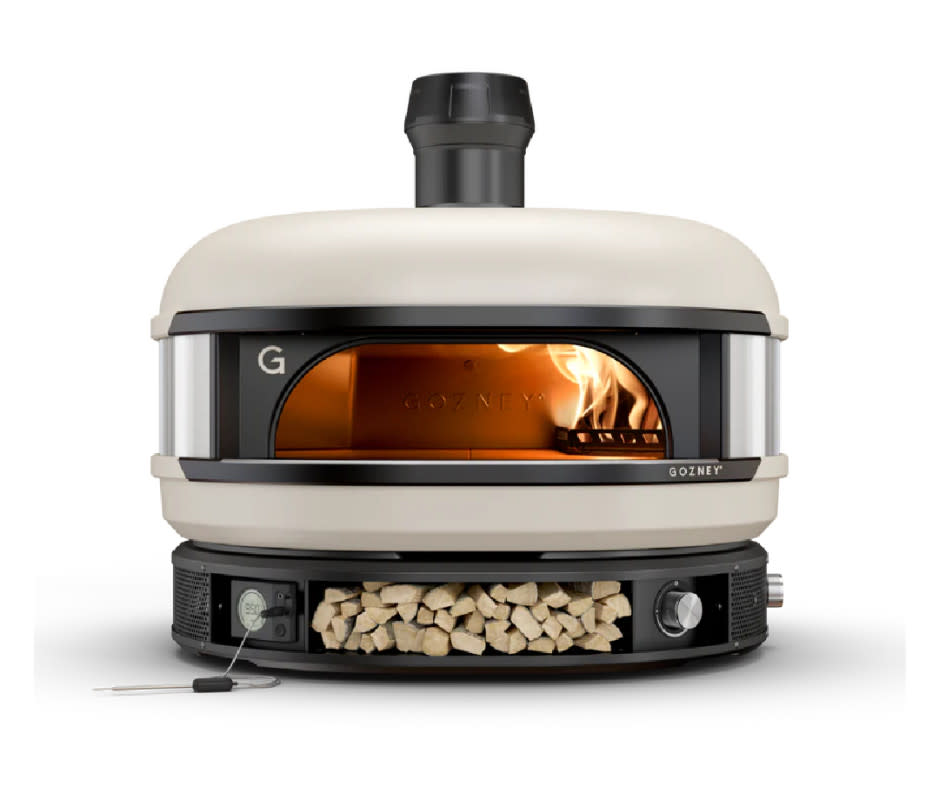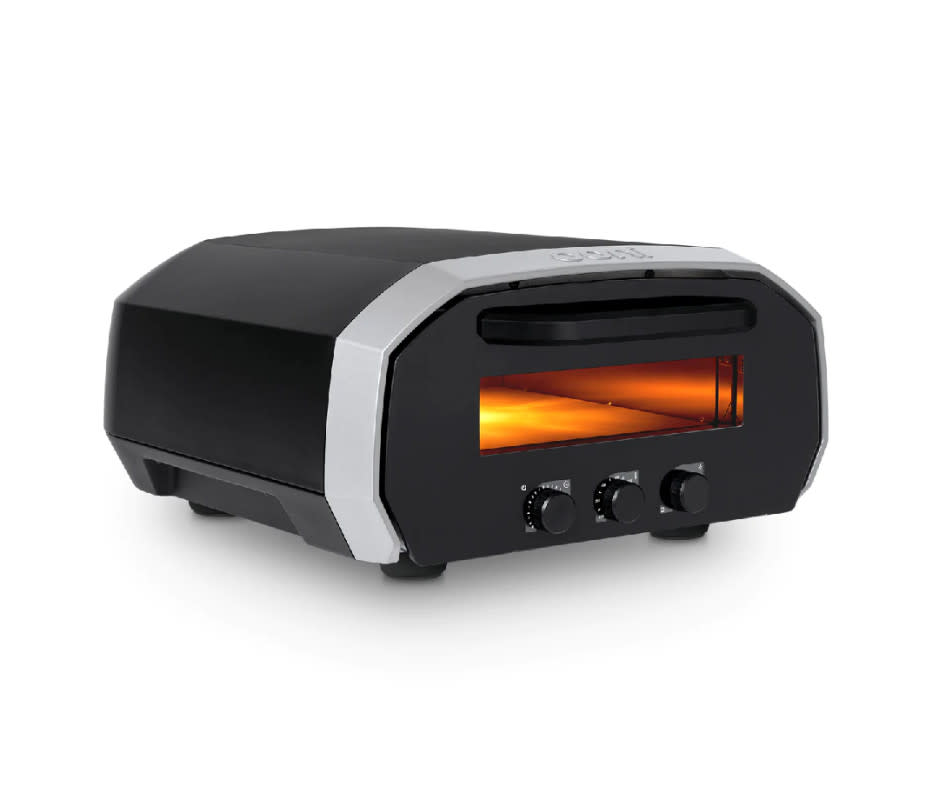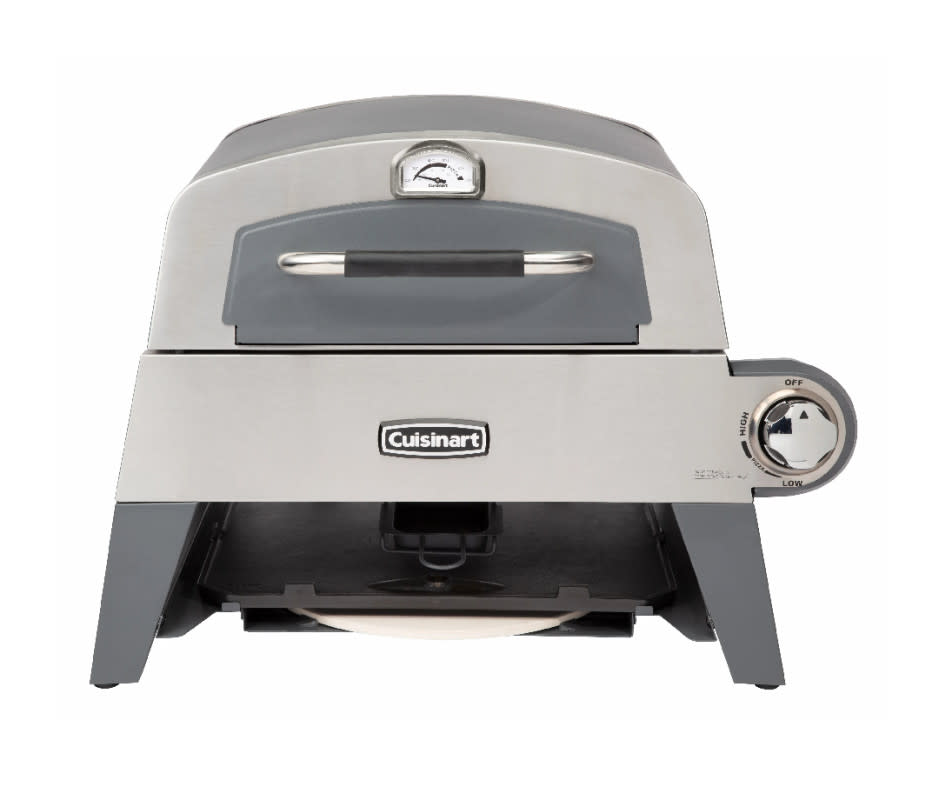The Best Pizza Ovens of 2024 to Sling Pies From Your Patio
If you invest in the best grills, what's your pride and joy? Some people have a penchant for gas grills and charcoal grills, others enjoy pellet grills and smokers, and some even like the ease of portable grills for nomadic lifestyles. But what if we told you your next most beloved purchase is one of the best pizza ovens of 2024?
Making pizza at home is a great way to get pies just the way you like them and embrace your inner pizzaiolo. The challenge in replicating your favorite pizzas is that standard kitchen ovens generally top out at 500 degrees F—at least 200 degrees shy of what you need for a proper pie.
Luckily, there’s been a boom in affordable consumer-grade pizza ovens that don’t require much outdoor space or upfront cost to get baking like the pros. The best pizza ovens often use propane fuel to speed heat-up times and employ efficient designs to cook pies quickly while keeping the oven ready for more, so you can feed a crowd fast.
Men’s Journal aims to feature only the best products and services. We update when possible, but deals expire and prices can change. If you buy something via one of our links, we may earn a commission.
Ooni Karu 16 earns the distinction of the best pizza oven overall. Though pricey, it provides consistent, even cooking and fuel flexibility in a thoughtfully designed package that'll keep you slinging pies all s
Related: Best Cheap Whiskey of 2024 for a Great Bottle on a Budget
Best Pizza Oven Overall: Ooni Karu 16
I’d been making “OK” pizza for a couple decades, but during Covid lockdowns I bought an Ooni Koda 16 and that upped my pizza game to the point where I’d have to drive an hour to get better pizza. Plus, each pie costs me less than $5 to make, despite using premium ingredients.
I’ve tested several other pizza ovens since, but Ooni Karu 16 is the first one that felt like a worthy upgrade. It can burn wood, charcoal, or gas; cooks more evenly; and gets hotter than any other home pizza oven I’ve tried.
Ooni Karu 16 Overall Impressions
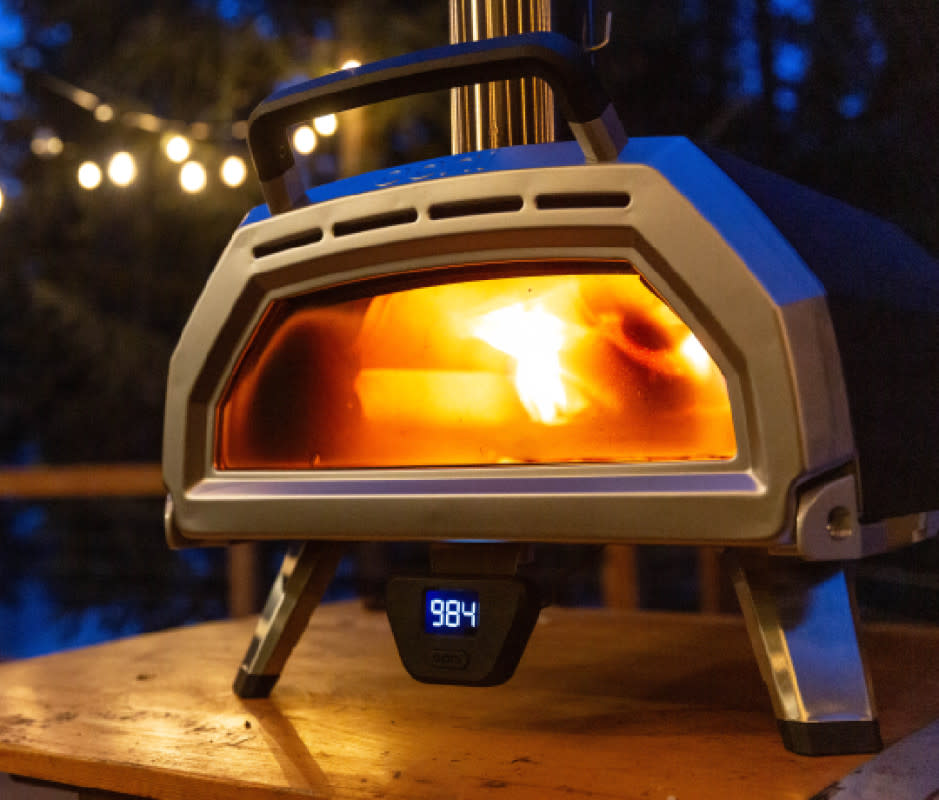
Justin Park
When it comes to cooking authentic Neapolitan-style pizza, your average home oven tops out around 450 or 500 degrees F while the chewy, airy crust of a Neapolitan pie demands 800 to 1,000 degrees F. Today, Ooni has a lineup of six distinct ovens in a range of sizes and fuel sources from electric to gas to wood; but in my opinion, Karu 16 is its best all-around pizza oven.
It addresses all my gripes with Koda. Most notably, it adds a door to the mouth of the oven, which prevents wind and cold air from sucking the heat out of the front of the oven, resulting in more even cooking. The way the oven directs flames over the pizza is also an improvement and I’ve found it less likely to burn crusts while doing a better job of melting cheese and cooking toppings.
Pros: Fuel Flexibility and Consistent Cooking
Home range ovens provide even heat with minor hotspots, but most pizza ovens have a fairly steep temperature gradient: blazing hot up to 1,000 degrees in the back close to the heat source and gradually cooling as you move toward the mouth of the oven. In winter, I’ve measured differences as high as 300 degrees between the back and front of the cooking surface in my Koda 16.
You quickly learn this temperature gradient means that, once the crust has stiffened enough, you need to start rotating the pizza so the less-cooked parts catch up. This is a skill and it’s fun when you get good at it, but too sharp a gradient causes problems. If the rear of the pie is cooking too quickly, but the front hasn’t stiffened up, you won’t be able to rotate the pizza since half of it is still limp. While you’re waiting on the front, the back will carbonize.
The glass-faced door on Karu 16 solves this. It keeps cold air out and the oven’s heat in, resulting in a less severe drop-off in temperature as you move toward the front of the oven. (I never measured more than a 120-degree difference between maximum and minimum temperatures inside Karu, though the rear is still the hottest spot.)
The result? The entire crust firms up much more quickly around the whole area of the pie, so you can run the oven at extremely high temperatures and begin turning it quickly, before any section of the pie gets overly charred.
Ooni Karu 16 comes set up to cook with wood, with a gas burner add-on for $119. Given that the price tag is already $799 before accessories, I wish it came with the gas option by default, but it’s worth the extra spend.
I tested both the wood fire box and gas burner as fuels. While the burner peaked at 889 degrees, I was able to push the wood-fired heat to 990 degrees—higher than the listed maximum of 950.
Aside from the higher temps, I also quickly came to appreciate the light smoky flavor added to pies when cooking with wood. At those burn temperatures, there’s not much smoke, but after having eaten hundreds of gas-fired pies, I immediately tasted the difference on the wood-fired pies and have come to prefer it.
Related: The Best G-Shock Watches of 2024
Cons: Funky Igniter and Limited Pie Size
The piezoelectric igniter on the gas burner gave me fits and almost never succeeded in lighting the gas despite creating a visible spark. Ooni customer service was kind enough to send me a replacement, but the second unit fared no better and I resorted to lighting it with a stick lighter.
My only other gripe with Karu 16 is a more general caution that applies to any pizza oven in this price range, and that’s the size limitations of these relatively small ovens. Karu 16 maxes out at about a 16-inch diameter pie, and I’m not aware of any sub-$1,000 household pizza ovens with a bigger capacity. (Ooni has announced a new Koda oven that will cook up to 20-inch pies for under $1,000, but it won’t be available for pre-order until May 2024.)
If you want to recreate big, foldable New York-style slices at home, you might be better off trying to get the most out of your oven. Because those pizzas have a slightly thicker dough and more ingredients on top, they need to cook at lower temperatures—and a properly heated stone in a 500-degree oven can do the trick.
Final Verdict
Ooni Karu 16 is the best pizza oven $1,000 can buy. Ooni launched this category of affordable high-temp home pizza ovens and constant innovation has kept the brand on top of it, with Karu 16 representing the pinnacle of its design prowess (so far). The consistent, even cooking and fuel flexibility make it a great choice for novices and pros alike. At roughly $1,000, when you add in the gas burner and essential accessories, such as peels and a cutter, the cost for Karu 16 isn’t cheap, but it’s still half the cost or less of any superior options.
How I Tested Ooni Karu 16 Pizza Oven
I spent about two weeks cooking pizza at home using Ooni Karu 16. I kept my normal pizza-making process exactly the same, using 65 percent hydration homemade dough balls kept in my fridge and allowed to proof at room temperature for at least an hour. Because Karu 16 uses both gas and wood fuel, I tested both back-to-back to compare performance and took temperature readings at various points in the oven using an infrared thermometer and compared that to the readout of Karu’s internal temperature readout.
I cooked about 40 15-inch pizzas in total, varying the oven temperature and techniques to see what yielded the best results and gauge how forgiving the oven is. To compare Karu 16 to other comparable options, I drew on my experience testing other consumer pizza ovens. In particular, I compared it with Ooni Koda 16 and Solo Stove Pi.
Weight: 62.6 pounds
Max pizza size: 16 inches
Max temperature: 1,000 degrees
Fuel: Wood, charcoal, or gas (add-on required)
Read our full Ooni Karu 16 review.
Best Budget Pizza Oven: Solo Stove Pi Prime
Solo Stove, makers of the sleek smokeless fire pits, jumped into the pizza oven game with their wood or gas Pi pizza oven a few years ago and recently released the Solo Stove Pi Prime which is gas-only and makes some minor improvements over the original. The headline on the Pi Prime is the $350 price tag which delivers ample cooking surface and temperatures up to 950 degrees. I’m not aware of any other consumer pizza ovens that get this hot at this price point.
Despite a low price point, the Pi Prime also comes with everything you need to get cooking including a bamboo launching peel, stainless steel turning peel, infrared thermometer, cover, and rocker blade pizza cutter. Much like their fire pits, the Pi Prime is also very light at around 30 pounds, it’s easy to move around for storage or taking on the road. The compact, stainless steel design is also highly durable, so it’s a great option for tailgating and camping.
The oven gets plenty hot, reaching up to 950 degrees in ideal conditions, though the open-mouth means wind and cold ambient temperatures can tamp down your peak oven temps. The three-sided flame design cooks pretty evenly, making it a good option for beginners, though you’ll still need to rotate pies frequently with the included turning peel to avoid burnt crusts and uneven cooking.
Probably the biggest limitation of the Pi Prime is the size of the opening where you launch your pies inside. Despite a roughly 15- by 20-inch stone inside, the opening limits you to making mostly 12-inch or smaller pizzas. If you’re used to picking up 18- or 20-inch takeout pizzas to share, the small pies can feel gimmicky and personal-sized. Some people love the artisan feel of smaller individual pizzas, but it’s harder to feed a crowd quickly and I don’t love the higher crust-to-topping ratio of small pizzas. But for about half the cost or less of most of Ooni’s options, the Pi Prime is a capable budget option for getting into home pizza-making.
Weight: 30 pounds
Max pizza size: 13 inches
Max temperature: 950 degrees
Fuel: Propane
Related: 15 National Forests Perfect for Your Next Camping Trip
Best Portable Pizza Oven: Ooni Koda 16
The Koda 16 was my first pizza oven and it’s still one of my favorites, surpassed only by Ooni’s Karu 16. While the two-sided gas burner is meant to mimic a traditional wood-fired oven, its lightweight powder-coated metal spaceship looks are far from traditional. The L-shaped flame spans the rear and left side of the oven and sends heat up and over the pizzas to quickly cook cheese and toppings without sending too much heat directly at the back edge of your crust.
There’s a learning curve with the Koda but once you get a feel for how long to let a pie firm up and how often to turn it, it’s easy to crank out pies in about 2 minutes with minimal downtime for reheating. Ooni’s product description suggests you can just turn the pizzas once with the Koda 16, but I get more even results with smaller, more frequent turns and I recommend purchasing a turning peel for the purpose.
Because the Koda 16 doesn’t have a door, it’s susceptible to cold temperatures and wind affecting the stone’s temperature gradient and overall interior temperature. In midwinter, I’ve found the mouth end of the stone can be 300 degrees colder than the rear, which can leave the mouth of the pie limp and difficult to turn when you need to. Koda enthusiasts have engineered doors for their ovens, but if you’re cooking often in very cold temps, you’re better off just buying the Karu which comes with a door.
Though the shape is a bit awkward for transport, it’s durable and compact with fold-up legs and a reasonable 40-pound weight that makes it easy to store if you don’t have dedicated space for a pizza oven. I’ve taken the Koda 16 lots of places via vehicle including miles into a backcountry hut via snowmobile and it still functions as well as the day I unboxed it. The Solo Stove Pi Prime is a better shape and weight for transport, but I much prefer the larger pizza sizes and cooking performance of the Koda 16. If you don’t mind smaller pizzas, the Koda 12 sports the same design in a smaller (30 pounds) and cheaper ($399) package.
Weight: 39 pounds
Max pizza size: 16 inches
Max temperature: 950 degrees
Fuel: Propane (natural gas adapter available)
Best Hybrid Pizza Oven: Gozney Dome
One downside of a dedicated home pizza oven is that most are one-trick-ponies that aren’t that useful for making anything outside of pizza. That’s great if you make pizza regularly, but it can be tough to stomach the price tags if you’re not sure it’s worth your commitment of funds and outdoor space. The Gozney Dome is popular for its pizza-making capabilities, but its slightly larger internal dimensions and rope-sealed oven door open up possibilities for baking, roasting, and searing when you’re ready to change up your menu.
This is heavier, beefier oven with a higher price tag that reflects the increased capabilities and heat retention thanks to triple-layer insulation and a thick, 30mm stone with insulation below. This not only allows you to cycle pizza cooking faster, but it also means you can bring the oven up to temperature and hold it longer with less fire or fuel for lower and slower cooks.
The Dome also can use either wood or gas for fuel and which you choose (Gozney doesn’t recommend running both simultaneously) changes flavors and cooking techniques, but it’s great to have the option. Because gas is predictable and doesn’t require management like a wood fire, you can use gas to heat the Dome initially, then switch to wood for smoke flavor. If you want a more consistent, hands-off cook, you can stick to gas only. I personally prefer the flavor from cooking with wood whenever possible, but there are plenty of times I go for gas for the convenience.
Weight: 128 pounds
Max pizza size: 16 inches
Max temperature: 950 degrees
Fuel: Wood, propane
Best Pizza Oven for Outdoor Kitchens: Alfa Forni Moderno 2 Pizze
The beauty of the latest crop of cheaper home pizza ovens is that they produce results close to that of commercial-grade pizza ovens at a much lower cost. The downside is most lack the beauty of a traditional pizza oven. If you’re building out a serious outdoor kitchen and want an oven that delivers performance and capacity as well as looking at home in a custom outdoor kitchen, Alfa Forni’s Moderno 2 Pizze fits the bill. This Italian-made oven costs more than triple what most of our other picks here run, but it not only looks good, but has the distinct advantage of a larger mouth and cooking surface that permits cooking two smaller pies at once or one large pie up to 19 inches in diameter which is closer to the “large” pies most of us order for takeout.
The oven comes either with wood or gas as the default fuel. If you want both, get the gas model and you can add wood capability via the Hybrid Accesory Kit for $300, but you can’t run both simultaneously as the wood kit covers up the gas burner. At an MSRP over $3,000 without many accessories, this clearly isn’t a casual purchase and won’t interest the simply pizza-curious, but if you’re a committed pizzaiolo who wants a more traditional look and increased capacity, the Moderno 2 delivers commercial-grade with a cost that’s still lower than custom commercial installs.
For more on how the oven performs, read our in-depth review of the Moderno 2 Pizze here.
Weight: 174 pounds
Max pizza size: 19 inches
Max temperature: 1,000 degrees
Fuel: Wood, propane
Related: The Best Tequilas of 2024 for Making Margaritas
Best Indoor Pizza Oven: Ooni Volt
Ooni has continued to innovate the best pizza ovens marketplace, and has more fuel options than anyone else, including wood, propane, natural gas, charcoal, and electric. Volt tops out at 850 degrees, which is 100 lower than Koda and Karu, though still plenty for a Neapolitan pie. It’s also more expensive than other Ooni options, heavier than Koda 16, and the small size limits you to 12-inch pies. But, if you don’t have outdoor cooking space or weather keeps you from wanting to cook outside, Volt gives you the high heat needed for quick-cooking artisan pies indoors or outside.
Weight: 40 pounds
Max pizza size: 12 inches
Max temperature: 850 degrees
Fuel: Electricity
Best Rotating Pizza Oven: Witt Etna Rotante
Unlike the relatively even heat of a traditional oven, home pizza ovens usually have hot spots. Many have a fairly steep heat gradient with the cooking surface and flames cooking hotter in the back with cooler temps further away, forcing you to frequently turn the pizza to ensure even cooking. While this skill requirement can add engagement to the pizza-making process, it’s also easy to burn crusts when you lose focus. The Witt Etna Rotante tackles this head-on by adding a rotating stone mechanism that parades the pizza methodically past the flames and ensures even heating of the stone.
With a $999 MSRP, you’ll pay for the luxury of not having to turn your pies, but you’re also much less likely to end up with an overly charred crust. In addition to the U-shaped burner that covers three sides, there’s an under-stone burner that helps ensure even temperatures throughout the cooking surface. All this gas-powered heat also means slightly shorter wait times for the oven to heat up—15 minutes for the Witt Etna Rotante versus 20 to 30 minutes for most other consumer ovens.
Weight: 59 pounds
Max pizza size: 16 inches
Max temperature: 950 degrees
Fuel: Propane
Best Multi-Purpose Pizza Oven: Cuisinart Pizza Plus
If space and budget are limited, but you want an outdoor cooking appliance that can cook more than just pizza, Cusinart’s innovative Pizza Plus gives you the ability to bake pizzas or transform it into a griddle or grill. Not surprisingly, there are some compromises to be made for the versatility and low cost. The biggest is the maximum temperature of 700 degrees and the fact that it takes about half an hour to get there. Still, 700 degrees gets you close. It won’t produce authentic Neapolitan pies, but it’s still going to produce crust that’s crispier outside and chewier inside than a more slowly baked pizza in a traditional oven.
The mouth opening limits you to 12-inch pies and if you’re really committed to pizza, you’ll be better off spending a bit more to get the Solo Stove Pi Prime, Koda 12, or another of the cheaper, smaller pizza ovens. But if you value the versatility of being able to transform the oven to a grill or griddle, it’s hard to beat the value of the Pizza Plus.
Weight: 45 pounds
Max pizza size: 12 inches
Max temperature: 700 degrees
Fuel: Propane
Related: A Dozen 20-Minute Workouts You Can Do at Home
What to Consider When Buying the Best Pizza Ovens
Size
While you can make decent pizza in almost any oven with the right amount of skill (and quality ingredients), the size of your oven is fixed and restricts what size pizza you can make at home. The most popular at-home ovens top out at around a 16-inch pie and realistically you’ll end up making 15-inch or smaller pizzas since the logistics of building, launching, and cooking push you toward not using the maximum amount of space on your peel and cooking surface. This is somewhere between a medium and a large pizza from most pizza shops in the U.S.
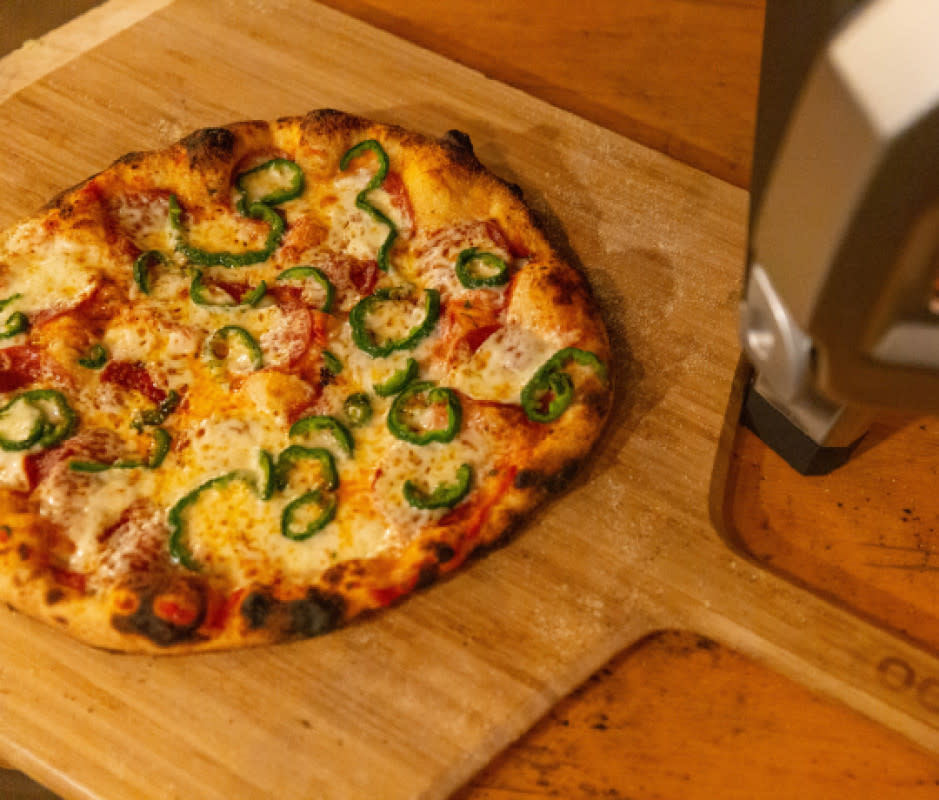
Justin Park
The maximum pizza diameter is restricted by both the size of the cooking surface as well as width of the mouth opening of the oven. The smallest number of the depth of the cooking stone, width of the cooking stone, and the mouth width will dictate the maximum pizza size. For example, the Solo Stove Pi Prime has a 15- by 20-inch cooking surface and a 13-inch mouth, so your maximum pie size is 13 inches.
Weight
For folks looking to permanently add a pizza oven to an outdoor cooking space, weight isn’t as much of a factor as for those who want to move their pizza oven frequently. If you need to move your oven before and after each pizza party, the weight (as well as size and shape) will be important considerations as the weights can range from as little as 30 pounds up to more than 200 pounds. Likewise, if you want to transport an oven for tailgating, catering, or camping, lighter and more streamlined ovens will make the process easier.
Lightweight ovens can produce great pizza, but the heavier options usually have superior heat retention thanks to increased insulation and beefier cooking stones that don’t lose as much heat during the cooking of a single pie, so you can more quickly toss in the next one.
Heat Source
Traditional pizza ovens use a wood fire in the back of the oven which slowly heats the stone or ceramic oven and cooking surface over the course of several hours. Most modern consumer pizza ovens mimic the same cooking mechanism with faster, more efficient designs using a variety of fuel options from traditional wood to liquid propane gas which is the most common.
Propane gas is popular because it’s widely available and consistent. Unlike wood fires, there’s little skill involved in firing up a propane burner and it provides a predictable level of heat, taking away the vagaries of wood fire that can alter cooking through the type of wood used and structure and size of the fire created. Some ovens, such as the Ooni Koda 16, can be converted to run on natural gas if you have a dedicated gas line run to your outdoor kitchen and the performance is comparable to propane.
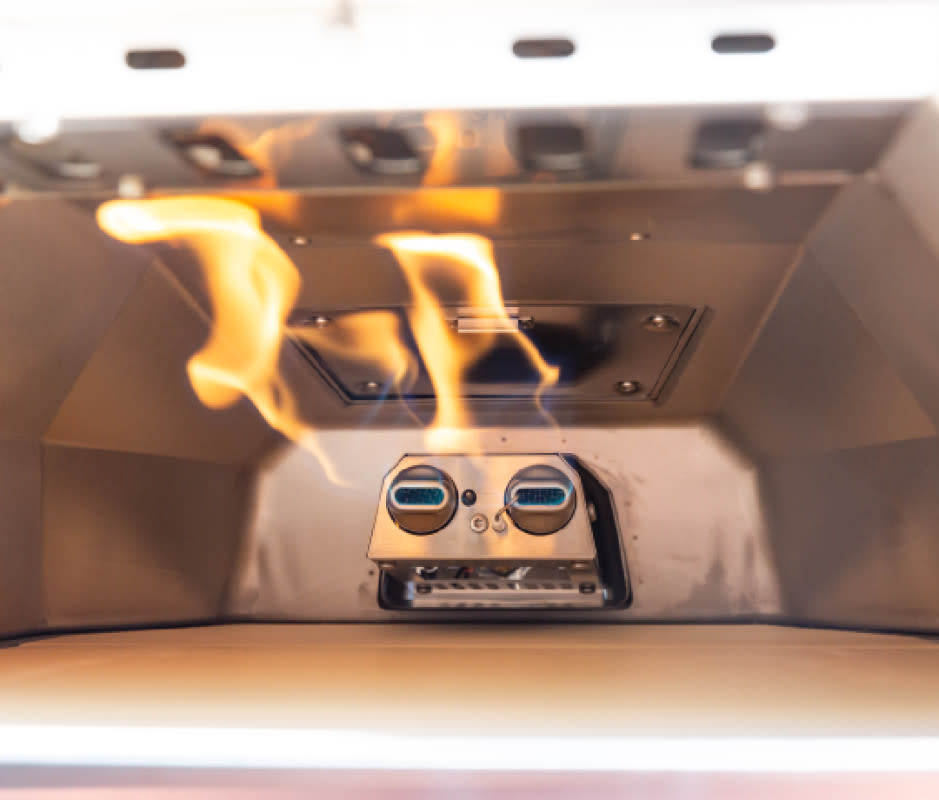
Justin Park
Wood also takes more skill as it can be challenging to get started and to keep going. The advantage of wood-fired pizza is a bit of smoke flavor and the skill and challenge of properly managing the heat. Because you’re burning wood at a much higher heat than barbecue smokers, the smoke flavor is much more subtle, but most pizza aficionados can taste the difference and I personally prefer it when I have the time and patience for the process.
Less common is a wood pellet-fueled oven, but Ooni’s Fyra 12 is a worthy player that gives you wood-fired flavor with a more hands-off approach via a gravity fed pellet burner. A few ovens such as Ooni’s Karu 12 and Karu 16 can burn charcoal which can be more consistent than raw wood fires but still gives that coal-fired flavor.
Related: 100 Healthiest Foods With the Highest Protein
Temperature
The popular wisdom around how hot a pizza oven should be is “as hot as it can get.” While this is great advice for a traditional oven that will come up short at whatever its highest temperature is, there’s a sweet spot for pizza ovens to ensure the quick rise and cooking that results in a crispy exterior and soft, chewy interior on your crust while still properly cooking your toppings.
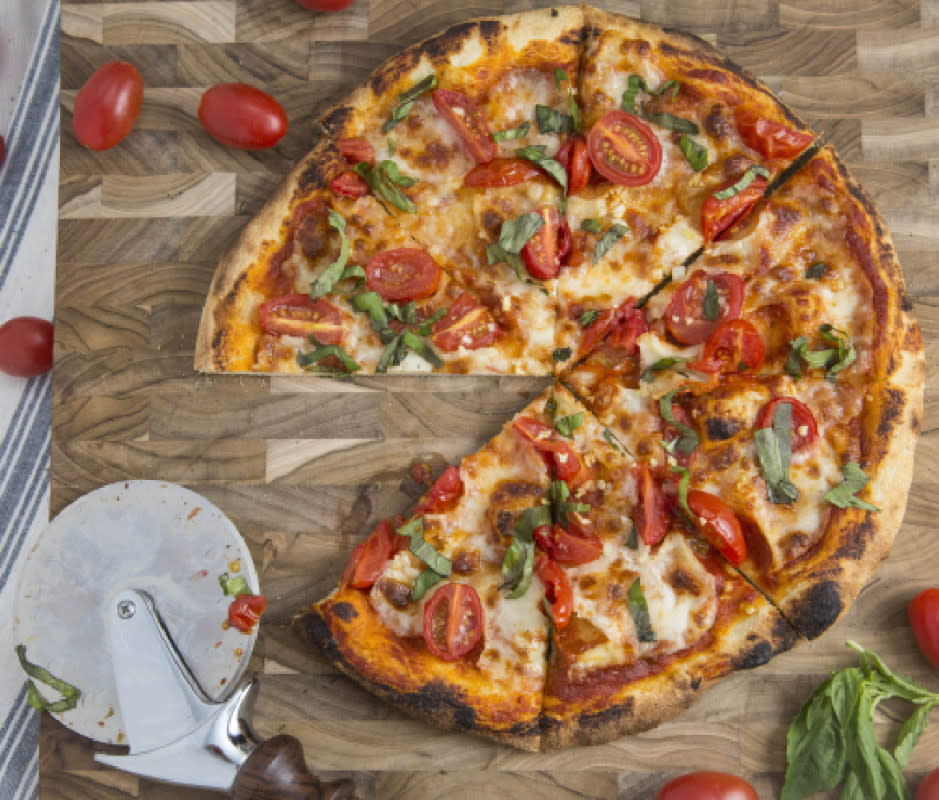
Justin Park
For thin crust pizzas such as Neapolitan-style, 850 degrees is normally plenty of heat to achieve great results while still giving intermediate pizzaiolos some wiggle room for not perfectly turning and managing the cook. I’ve cooked plenty of pies at close to 1,000 degrees and while they often turn out great with the beautiful leopard-print dots of blackened crust micro-bubbles, it’s easy to over-char crust at these higher temps. Thicker crusts and pizzas with more toppings loaded on will do better at lower temperatures closer to 700 degrees where you’ll be able to leave the pie in longer to ensure the toppings and interior dough get properly cooked, but it still goes quickly enough that the crust doesn’t overcook and become unpleasantly crunchy.
Why You Should Trust Me
I’ve been making pizza at home for at least two decades and the first 15 of those years were spent evolving my process in a traditional electric oven. Using dedicated pizza ovens for the past 5 years, the quality of my pies has increased exponentially to the point where I’ve been hired to cater several events, despite not actually having a pizza catering business. I’ve tested nearly all of the most popular consumer-grade pizza ovens, running about 1,000 pizzas through them in total.
